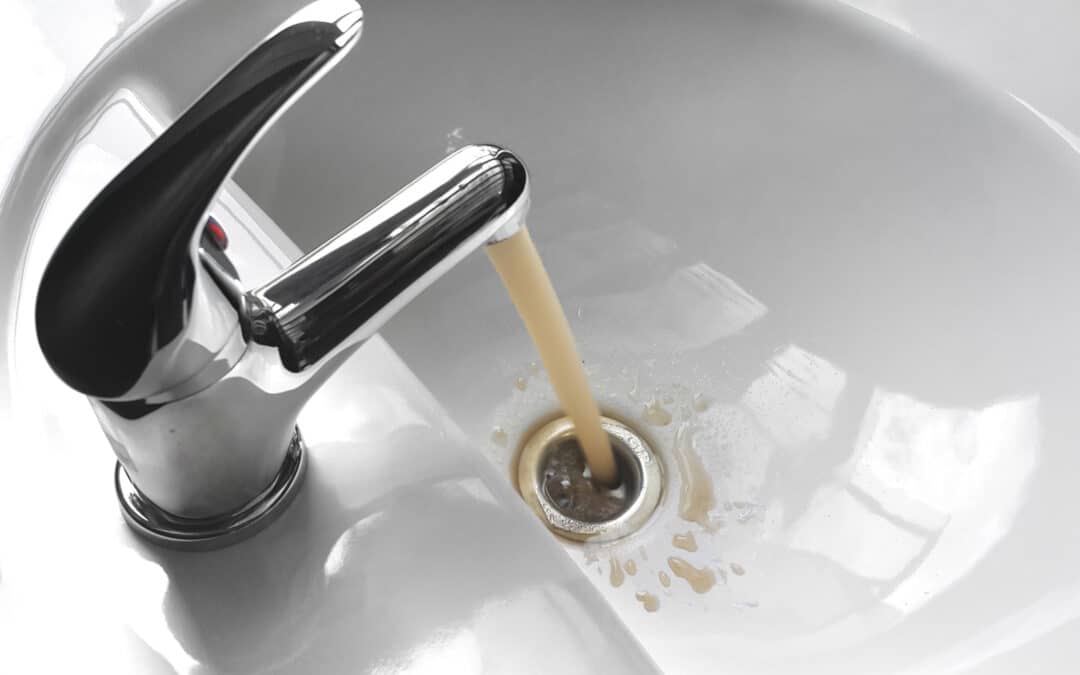When you turn on your taps, you expect safe, clean drinking water that’s free of contaminants like lead, bacteria and chemicals. After all, your city’s water treatment plant cleans and disinfects the water in order to remove any debris and pathogens that could cause illness. Unfortunately, if your plumbing pipes are old or in disrepair, they could undo all the work that was performed at the treatment plant. In this article, we’ll discuss three signs that you might have contaminated tap water.
Warning Sign #1: Lead Leaching from Service Lines and Fixtures
Lead was officially banned from service lines and fixtures in 1986 with amendments to the Safe Water Drinking Act, which means that having lead in your plumbing pipes and fixtures is less common than it once was. However, if you live in an older home that hasn’t had its pipes and fixtures updated, your plumbing system may be leaching lead into your tap water. This is especially bad for children because it can lead to learning delays, slower physical development and behavioral issues. The truth is that there’s no safe level of lead, and if you want to remove the lead from your tap water, it’s recommended to remove the contaminated pipes and replace them with lead-free plumbing pipes.
Warning Sign #2: Corrosion from Old Galvanized Pipes
Galvanized plumbing pipes were a popular choice from the 1920s until the 1960s because of their affordability, durability and corrosion resistance due to the zinc coating. Over time, that zinc coating can start to wear away, exposing the underlying steel to the water flowing through the pipe.
Once the steel is exposed to water, it starts to rust from the inside out, leading to contaminated tap water. When this happens, your water may appear red or rusty and taste terrible. You can also look for stains around your faucet and sink drain. If you notice these problems, the best thing to do is have your old galvanized steel pipes replaced with new plumbing pipes.
Warning Sign #3: Cracks and Leaks Inviting Contaminants
Plumbing pipes can start to crack and leak for a variety of reasons, including poor installation, high water pressure, corrosion and deterioration due to age. When pipes start leaking, most homeowners think of high water bills. However, that’s not the only concern. If water can exit your plumbing pipes through cracks and holes, bacteria, dirt and untreated groundwater can enter your plumbing pipes, causing tap water contamination, and the risk of contamination increases if the pipe also has low water pressure. If you notice high water bills, low water pressure or a change in the way your water looks or smells, it’s time to call a local plumber to replace your broken pipes.
Lead leaching from old plumbing pipes and fixtures, galvanized pipe corrosion, and cracks and leaks can all contribute to contaminated tap water. The good news is that you don’t have to live with unhealthy tap water. You can call a professional plumber, like those at Lutz Plumbing to help you repair your pipes and restore the quality of your drinking water.
If you’re living in a home that was built before 1980 and worried about contaminated tap water, we can help you at Lutz Plumbing in Kansas City. Our team of professional plumbers can inspect your plumbing system for cracks, leaks and age, test your water for heavy metals and contaminants and recommend the right plumbing solution for your home. If you’re ready to ensure that your potable water is clean and safe, contact us today.

